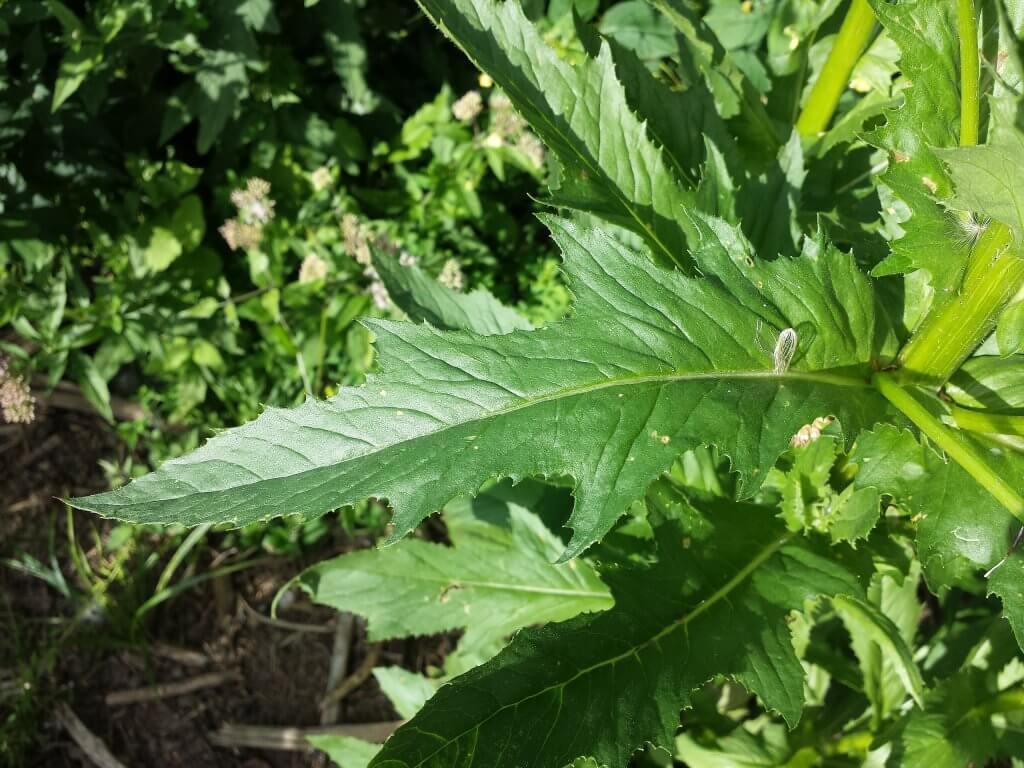Fireweed (Erechtites hieraciifolius), is a herb that many will either love or hate. As a member of the daisy family, Asteraceae, it has a particularly pungent aroma and flavoring that can be an acquired taste. You may also see it being referred to as American burnweed and even pilewort, which hints at its past use as a medicinal herb.

Originally native to North and South America, it has also found its way across the world through trade and colonisation. It grows throughout North America, but the highest population densities are found in the northeastern and midwestern states. You’ll usually find it growing in recently disturbed soil, especially in an area that may have been recently burnt or affected by fire. This helped to give fireweed its name, as it quickly dominates an area that fire has passed through.
It is a fairly tall weed, growing quickly to an average height of 1-2m. Its leaves are thin, lightly serrated and have a long lobed, lance shape. The chunky flower buds that appear in summer and early autumn have white to pale yellow petals, and barely open. They cluster together at the top of the plant, developing into a seed head full of dry wispy fruits, much like the dandelion.
Edible parts and other uses
Young leaves and shoots can be chopped or added whole straight into a salad or sandwich, however some can find the taste too overpowering. Finely chopping the leaves and gently sautéing with other mild herbs and butter can create a tasty sauce for potatoes, wild mushrooms or groundnuts. Some foragers compare the taste of fireweed to tarragon, a herb which pairs well with stews, fish and meat dishes. The young flower buds and shoots can also be pickled, giving them a sweet, crunchy tang.

Histories and stories have emerged in Native American cultures, of fireweed being used often in medicinal practices. It is believed that poultices and concoctions were made to treat skin lesions, poison ivy irritation, dysentery and also haemorrhoids. A concentrated extract of the plant could also be infused with oil to create a purgative, which was used to rid the body of toxins.
Cautions
Scientific studies have shown that fireweed contains trace amounts of pyrrolidine, which can cause damage to the liver if consumed in great quantity. However as with most foods, anything eaten in large amounts is generally not good for the body. So fireweed in small, herb like, quantities is safe to consume.
Foraging

Spring and summer are the optimum times for harvesting, as the new shoots and buds begin to appear. You’ll find fireweed growing in a number of locations, from road edges to lake edges. However as with all wild food foraging, pick plants that are considered weeds away from urban areas to avoid the risk of herbicides.
You can also harvest the leaves throughout the fall and even winter. However the leaves will likely be tougher and with a more bitter flavoring.
Did you know…
Fireweed shares its name with that of another north American native species. Fireweed (Chamaenerion angustifolium), occasionally referred to as great willow herb, is another tasty wild edible. You can harvest and prepare the young shoots and leaves of the plants in much the same way.
Conclusion
Due to its strong flavor, it can be hard to find a good balance when preparing meals with fireweed. However with a little experimentation, you will find the flavoring matches a number of surprising dishes. From fruit salads to cold pasta salads, fireweed can add a interesting twist to a dish. Growing in many fields and back yards, fireweed is a great native wild edible that you can forage and experiment with throughout the year.
—————Written by Hannah Sweet
Hannah is a freelance writer and graphic designer from the UK. With a penchant for travelling, photography and all things botanical, she enjoys writing about a wealth of topics and issues, from conservation and slow living, to design and travel. Learn more about her writing and design services at www.sweetmeanders.co
Many of our readers find that subscribing to Eat The Planet is the best way to make sure they don't miss any of our valuable information about wild edibles.
See our privacy policy for more information about ads on this site






